There is an upcoming
public meeting to discuss the possibility of a two-way cycle track around the Public Garden. I encourage people to attend. The mess of one-way streets around the Public Garden (and around downtown Boston) makes it difficult for bike riders to get around safely. It's good that they are looking into fixing this. Perhaps it can integrate with
Connect Historic Boston. But there's so much more to these streets than just cyclist safety, as important as that is.
As anyone who has lived, or visited, here knows, the streets around the Public Garden and the Common are some particularly nasty, wide, one way racetracks. It seems absurd: the Public Garden being one of the jewels of Boston with so much money and effort invested in it, yet it is surrounded by a sea of pavement. How did it get to be so screwed up?
Well, we've heard about the dirty 1970s and the damage wrought on this city by traffic engineers and leaders who seemed determined to gut every nice aspect of town and turn it into a giant highway/parking lot. But it goes further than that. From the
Ninth Annual Report of the City Planning Board (1923):
Boston was one of the first cities in this country to adopt the expedient of one-way streets in order to lessen congestion and confusion.
It must be hilarious, to generations of lost drivers, that they thought these one-way streets would actually "lessen confusion." But what's sadder is that this attitude
comes from a time when pedestrians were being driven from the streets, murdered in mass numbers (200,000 in the 1920s), and stripped of their traditional rights to the street as a public space. The elites wanted wider streets for their cars and trucks, even though the vast majority of citizens did not possess either. And the elites got what they wanted. The
City Planning Board, which had been formed only a decade earlier, seems to have viewed its job as primarily being about identifying blocks for destruction with the goal of widening streets.
They even
sliced off a piece of the Public Garden itself -- unthinkable today -- and claimed that there was "no opposition" from the public:
Unfortunately, the matter had progressed beyond the stage of a public hearing before coming to the attention of the Board, and there being no opposition from the public or from the Transit Commission to a taking in excess of its recommendation, a further strip of the Public Garden was taken, and Boylston Street widened between Church and Arlington streets to a width of 120 feet.
And that's where it remains today.
The proposed cycletrack is a better use of all this excessive street space than current conditions. But there's an even better solution: Two-way complete streets. There's simply no sense in having a high-speed one-way loop around the Public Garden. It's incredibly irresponsible on the part of BTD. This aggressive engineering of multi-lane one-way streets here, and in adjacent blocks, is ridiculous, reckless and unjust. Let's take a tour:
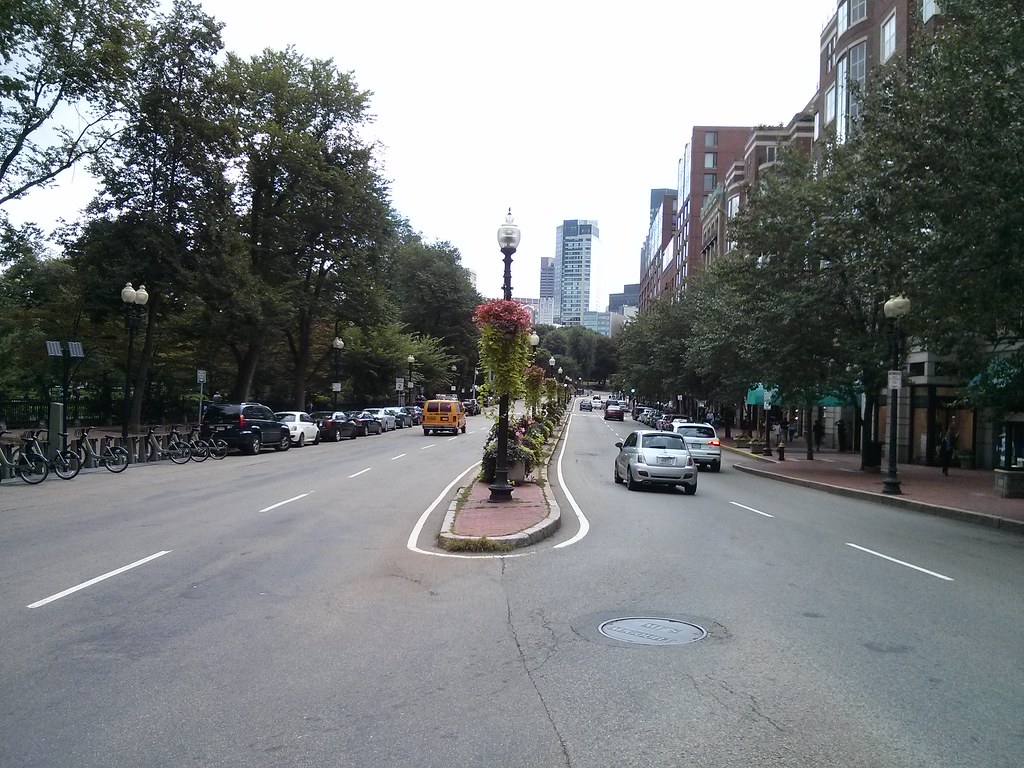 |
| Boylston Street is 120' from Garden to building line. I've noticed that crossing at this intersection (~80') is difficult for seniors because BTD doesn't care enough about pedestrians to set the timing right. |
 |
| Well at least there's a nice sidewalk. You can see how the street flares out though. |
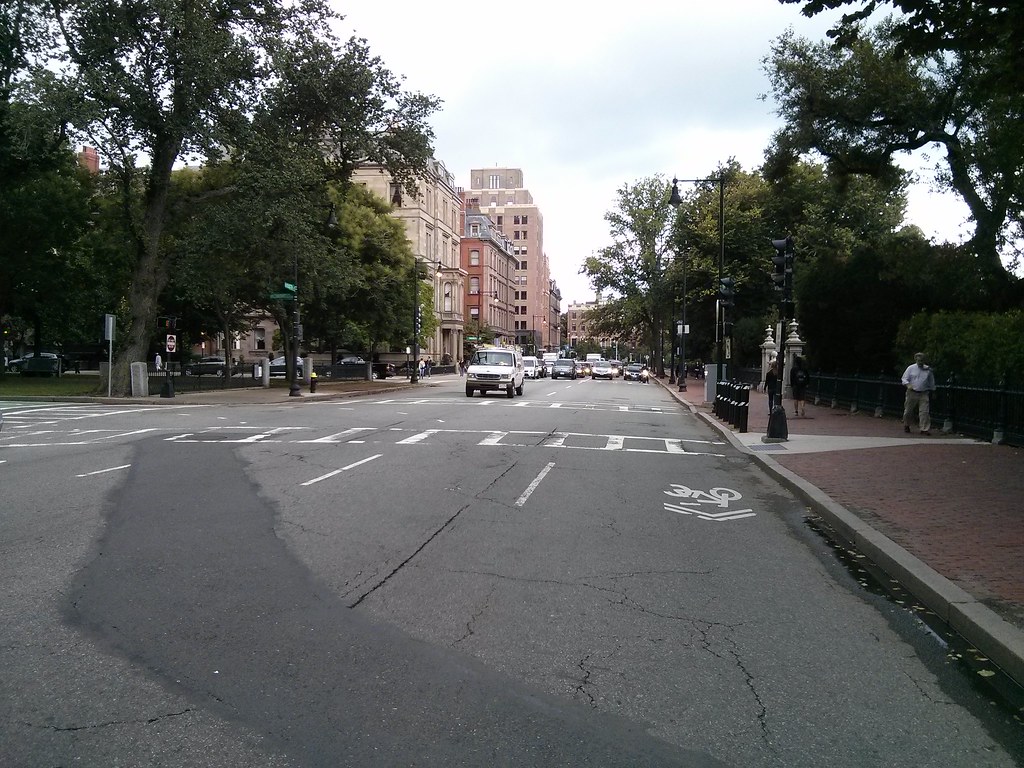 |
| Arlington Street is about 50' curb-to-curb. That's wider than Memorial Drive. |
 |
| This bit of devilish engineering has more in common with a highway ramp than a city street. |
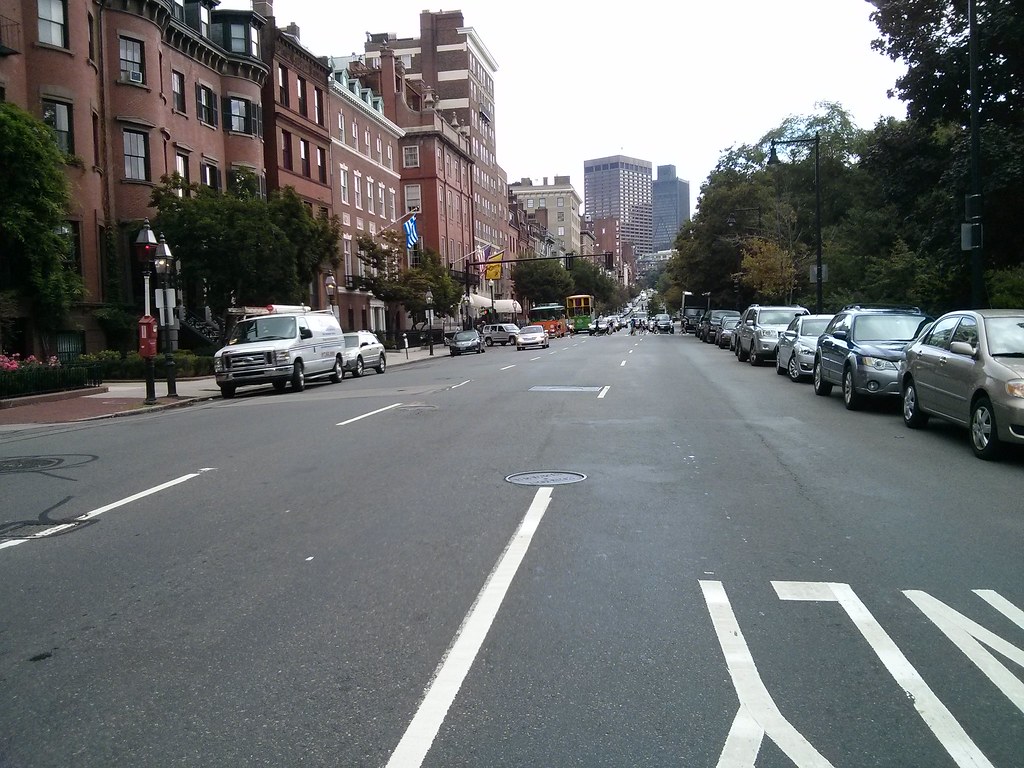 |
| Westbound racetrack, but not so helpful for people trying to go east. |
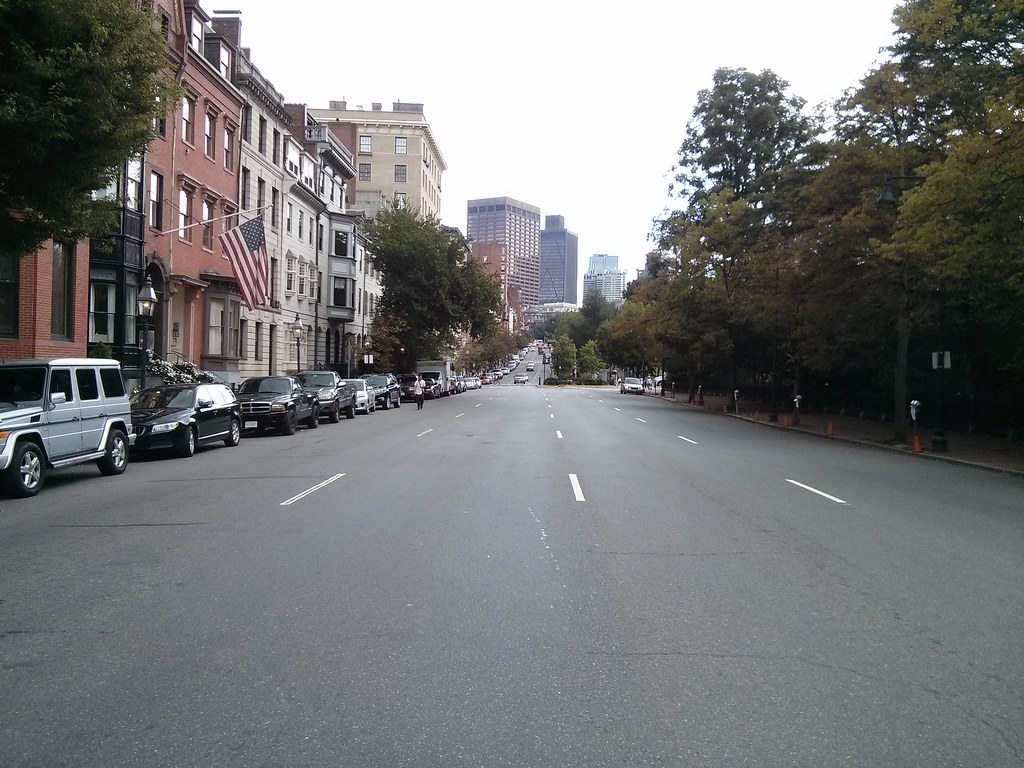 |
| Just ridiculously wide. Beacon Street varies between 50' and 65' curb-to-curb along this stretch. |
 |
| This section of Charles Street is 45' wide curb-to-curb and functions as a one-way speedway. What in the world for? It's supposed to be a shopping street. There's simply no sane reason for it to be one-way, with so many lanes. |
 |
| The sidewalks are tiny, pitiful, and difficult for people with disabilities to navigate. Or just difficult for crowds, period. Wide streets, tiny sidewalks. This street is a disgrace. |
 |
| Back to Beacon Street. Hey look, it's two-way, and the world didn't end. Too many lanes though. This is highway-thinking, not city thinking. |
 |
| What "genius" thought a HIGHWAY between the Public Garden and the Common was a good idea? The roadway is 70' at this point. That's almost as wide as the nearby Mass Pike. |
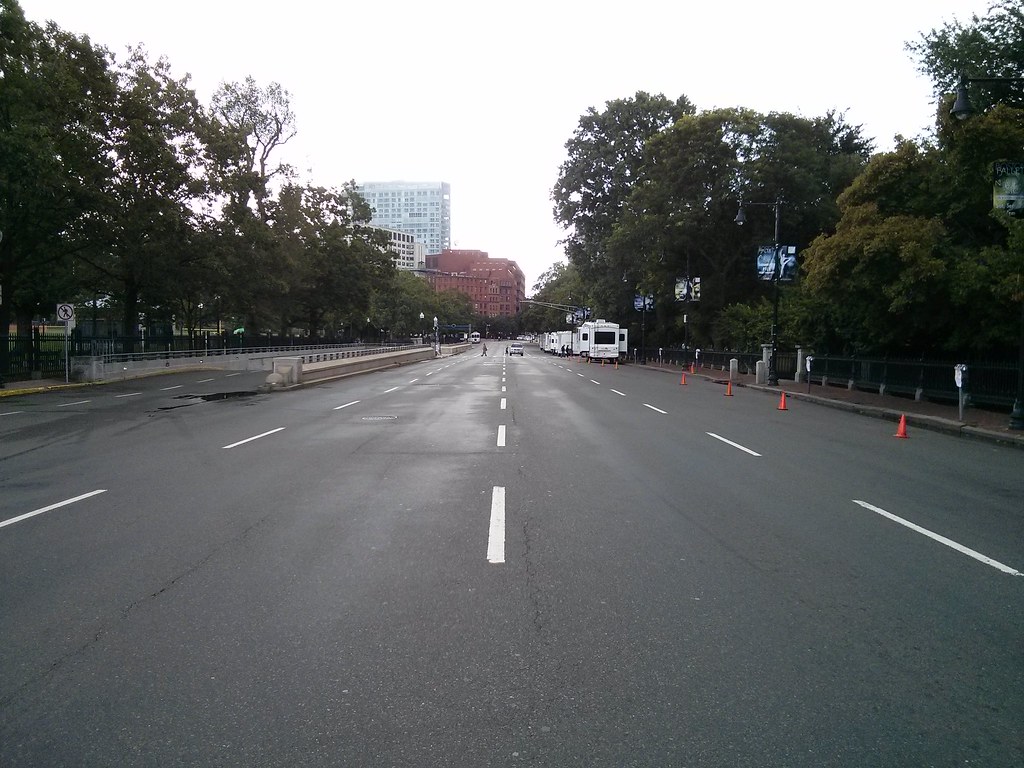 |
| The fact that I can take these pictures indicates that this road is massively over capacity. It's like standing on a drag strip. |
 |
| Tiny or impassable sidewalks, giant roadway. Yes you can walk through the parks, at least. But you can't ride there. And what kind of message does a 4-lane highway send about our city? |
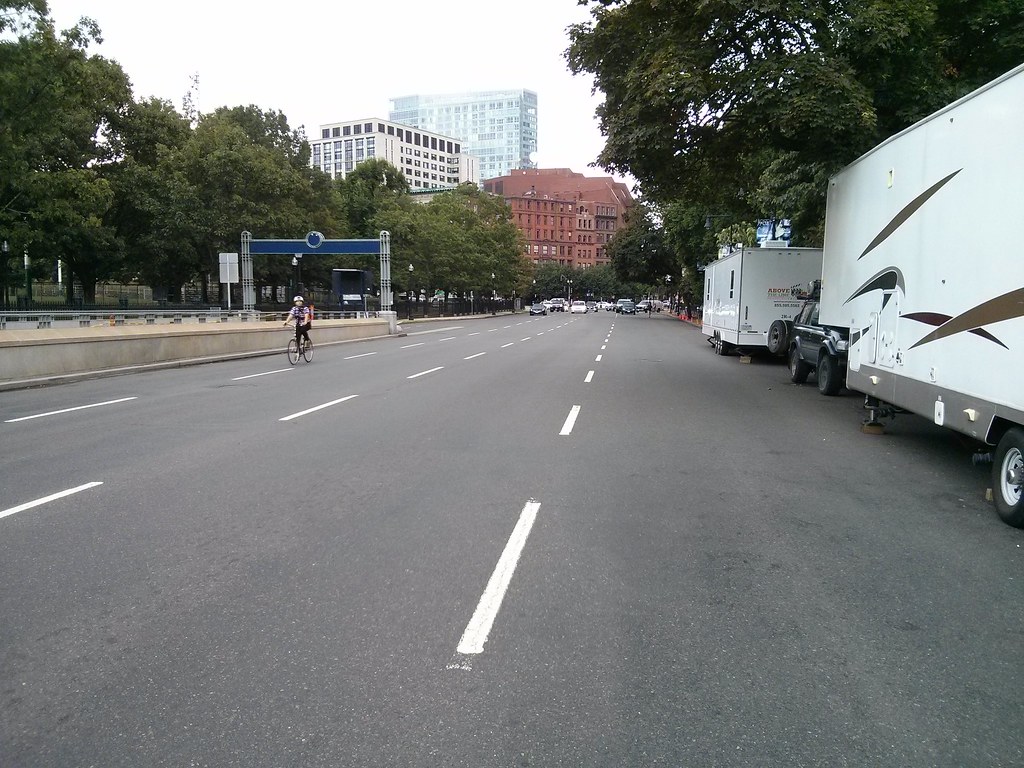 |
| One rider braves the racetrack. |
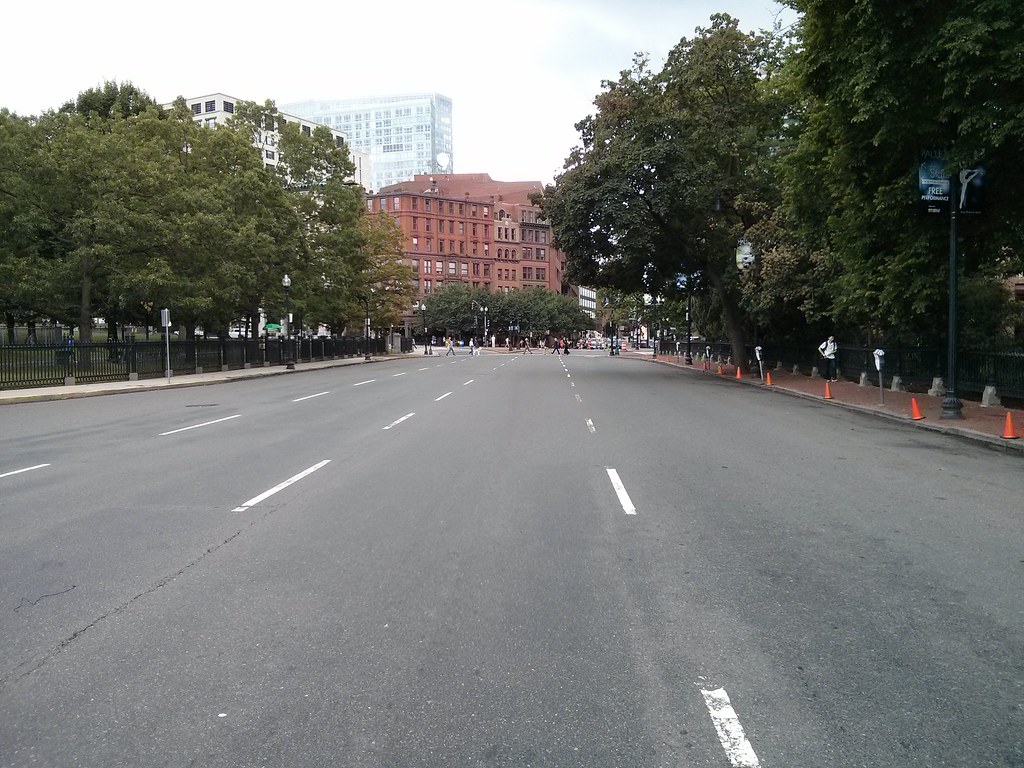 |
| Just think about how much tax money gets sucked into maintaining this ridiculously wide monster road. It's anti-urban and it confuses drivers too. What a waste. |
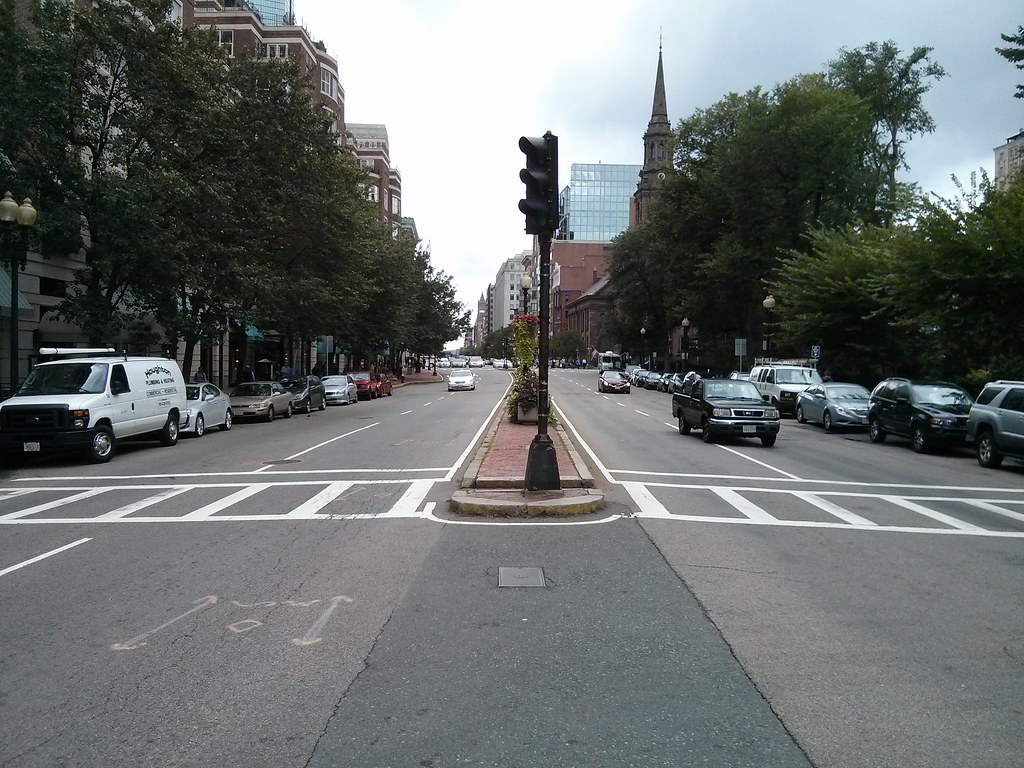 |
| BTD probably thought putting a dinky little planter with some flowers in it is all that's needed to make everything better. Nothing that actually involves making the street safer or more human-oriented. |
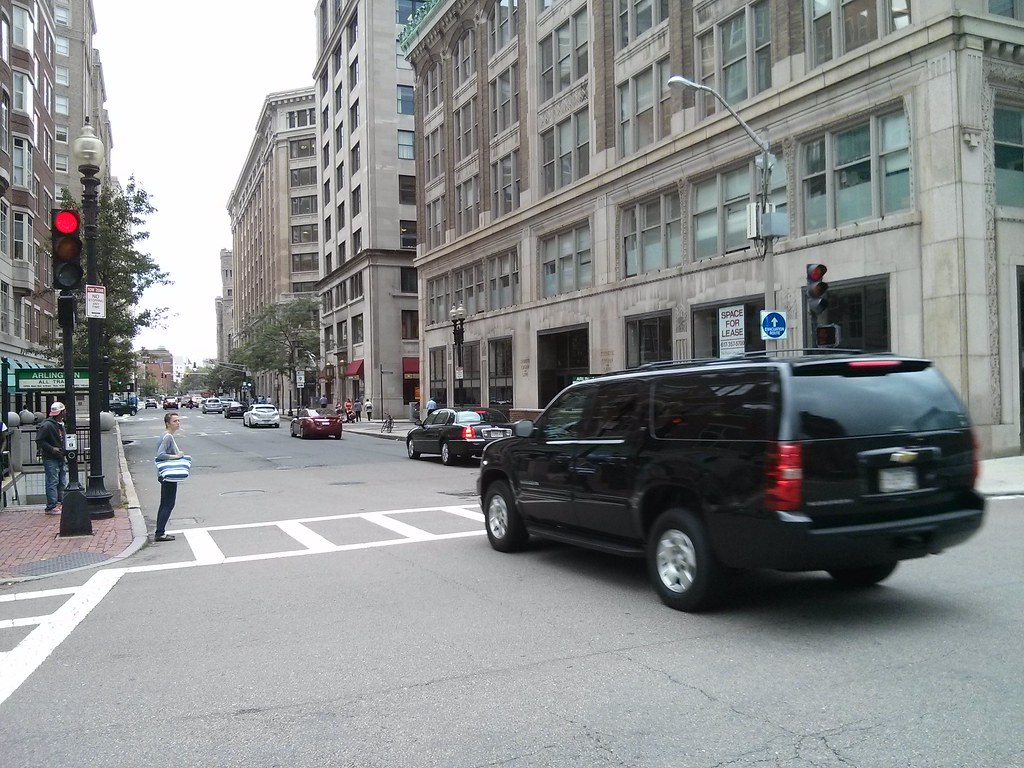 |
| I guess the walk wouldn't have been complete without a large SUV running through the red light as I'm trying to take a picture. |
The cycletrack idea is better than nothing, but it's a band-aide. The real problem is that our streets are still largely unchanged from the highway-crazed, anti-city transportation departments of past decades. What would really help everyone -- pedestrians, cyclists and drivers -- would be to discard all the ridiculous over-engineered intersections, and replace all the wide one-way streets with two-way streets that meet at simple, well-understood intersections. I also propose the following rules of thumb for city streets:
- First, ensure sufficient walking space. If you can't guarantee 10' sidewalks then consider a "shared, slow street" concept.
- If the street is wide enough for two lanes then it should be a two way street.
- If the street is wider than that then either widen sidewalks (for slow streets) or create bike lanes (for slightly faster streets).
- If it is even wider than that, then consider wider sidewalks, street parking, separated cycle tracks, buffered bike lanes, or bus lanes if there is a route.
- If the street is really wide, then implement the Complete Streets concept. But why is the street so wide? Perhaps it should be narrower.
There really isn't a place for more than one travel lane in each direction on most city streets. Perhaps the busiest, widest and most central streets could have more, assuming there doesn't need to be a bus lane there. Intersections should be kept as simple as possible. Traffic signals which attempt to be
too clever just confuse people, and almost always wind up screwing over pedestrians. Fancy traffic engineering is not appropriate or necessary. The point of a city street is not to be a sewer or a conduit, but to be part of our shared inheritance, our public open space, a public way that is open to everyone for business or pleasure. Having streets around the Public Garden designed in a way that is more appropriate for the city may even obviate the need for cycle tracks, and make it safer for pedestrians and drivers as well.
















I'm something of a New World Economics very narrow streeter, although I really don't mind the typical New England one or two way street, but "city" streets like these, or the McGrath Highway in Somerville are utterly ridiculous. Over most of these you could fit at least one row, plus sidewalk and street parking of the 4-6 storey apartment buildings lining Comm Ave in Allston -- and still leave two lanes of street. It's a waste of land, public money and opportunity.
ReplyDeleteEvery single day I walk and/or drive these streets between East Cambridge and the South End. You are absolutely, completely on point here. These streets should be two way, there should be bike lanes, and several of the sidewalks should be wider.
ReplyDeleteI can't tell you how much I agree! I think if the City focused on making Charles, Beacon, Arlington, and portions of Boylston by the Public Garden two-ways with cycle tracks on both sides of the street, we would be much better served.
ReplyDeleteMy longstanding issue is that there is no easy way to get from the Back Bay to the Longfellow Bridge without either going all the way up and around Beacon Hill or along Storrow Dr (which is legal, albeit terrifying).
Have you had any feedback on your idea? I think the 2-way Public Garden cycletrack idea is the wrong solution.
Regarding feedback, there's the comments here, and some positive retweets. But I wasn't able to attend the public meeting due to a schedule conflict. It's a busy week.
DeleteFor real change, we will probably have to wait and see what the next mayor will be willing to do.